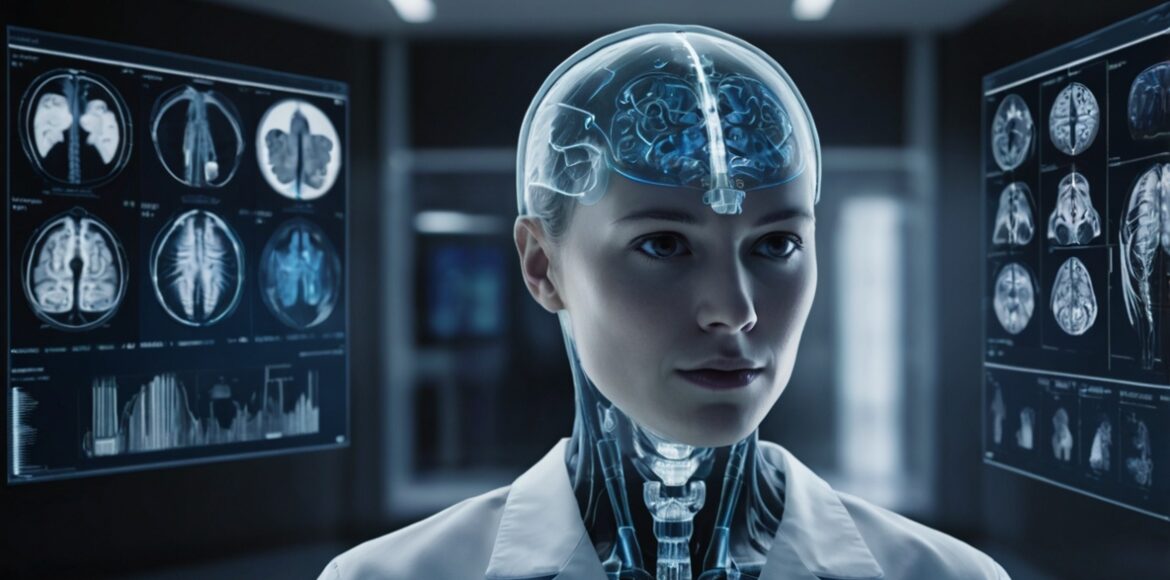AI in Healthcare: Opportunities and Limitations in Diagnostics

Artificial Intelligence (AI) is quickly becoming a powerful ally in modern diagnostics. In 2025, its role isn’t just futuristic—it’s practical. Whether you’re in a clinical setting, biotech startup, or digital health platform, understanding how AI supports diagnostic excellence—and where it falls short—is essential. Here’s a professional, real-world guide.
1. Sharper Diagnostic Accuracy & Speed
AI tools are enabling faster and more consistent analysis of scans and health records. For instance, an AI-powered stethoscope developed at Imperial College London now delivers accurate diagnoses of heart failure, atrial fibrillation, and valve disease in just 15 seconds—and doubles accuracy for heart failure detection during NHS trials. The Guardian
Across broader healthcare systems, AI is improving the interpretation of X-rays, CAT scans, and MRIs. These systems often match or outperform human consistency—especially when AI augments clinician input. Financial TimesPublic Health
2. Early Detection & Proactive Care
AI excels in identifying conditions early—often before symptoms even appear. Diagnostic systems are now recognizing subtle patterns in imaging and test results that humans might miss. Government Accountability OfficeSafer Care Insights
Some advanced prototypes, like MAI-DxO, are architected to simulate multi-specialist reasoning by orchestrating several AI models. In controlled trials, these systems achieved ~85% diagnostic accuracy—significantly above human experts—while cutting cost per case. AIMultiple
3. Real-World Constraints: Data, Bias & Trust
Disparities in training data—particularly underrepresentation of certain populations—can skew AI outcomes and risk inequitable care. IJMR Wikipedia
Moreover, many AI tools operate as “black boxes,” making their decisions opaque. This lack of explainability undermines trust and complicates regulatory compliance. Wikipedia+1
4. Human Expertise Remains Essential
Even high-performing AI tools deliver best when partnered with clinicians. As experts at Philips have noted, AI amplifies—but doesn’t replace—professional judgment. The Guardian
Equally, a peer-reviewed study in The Lancet warns that over-reliance on AI may erode foundational diagnostic skills among practitioners if not applied thoughtfully. The Economic Times
5. Regulations, Liability & Ethical Oversight
Healthcare AI moves fast—faster than new laws. A range of legal and ethical risks emerges: model hallucinations, bias, unclear accountability, and regulatory uncertainty. Morgan Lewis Wikipedia
For AI use to be safe and accepted, organizations must embed transparency, robust validation, and clear responsibility from day one.
The Bottom Line: Smart, Balanced AI Integration
AI is reshaping diagnostics—but the smartest path forward combines technology, ethics, and human oversight. Here’s a practical framework:
| Opportunity | Practical Tip |
|---|---|
| Faster, more accurate diagnostics | Pilot AI tools alongside clinicians to validate performance |
| Early disease detection | Use AI to triage signals—always keep final judgment human |
| Bias mitigation | Train models on diverse, inclusive datasets |
| Explainability & trust | Favor tools with transparent reasoning (XAI) |
| Regulatory compliance | Align with frameworks like CONSORT-AI and GDPR/HIPAA |
NOTE: This content (including all text, graphics, videos, and other elements on this website) is protected by copyright and related rights laws. Material from Conyro.io may be copied or shared only with proper attribution and a direct link to the original source. Thank you for following Conyro.io.






